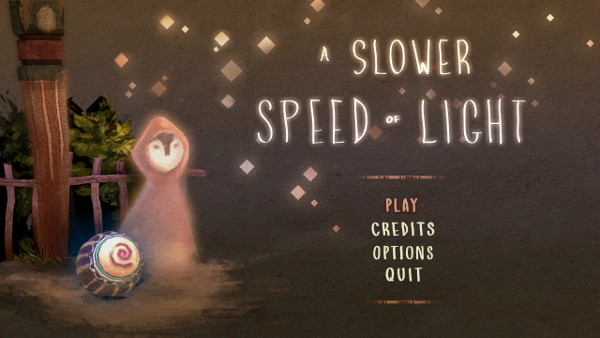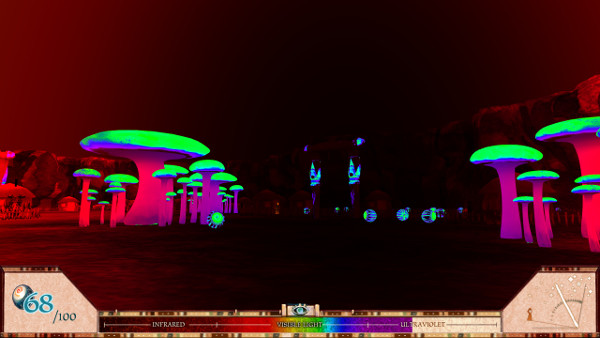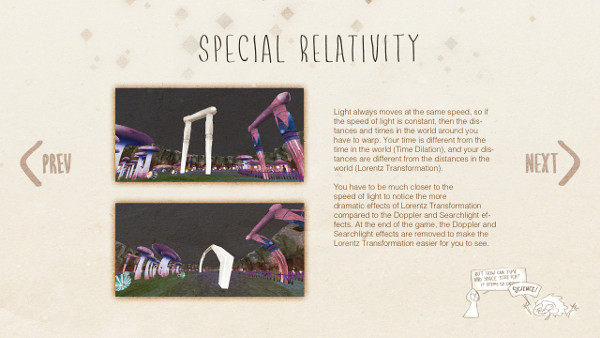Who said physics couldn’t be cooler? Thanks to MIT Game Labs, A Slower Speed of Light allows the curious player to manipulate the speed of light.
Sounds neat, right? A Slower Speed of Light “combines accessible gameplay and a fantasy setting with theoretical and computational physics research.” Taking a didactic approach, the game seeks to simultaneously teach and stimulate.
Design wise, the gameplay appears to be basic. Players collect and use orbs to alter the speed of light to walking speed, allowing their avatar—a lost spirit of a child—to navigate the ether. These light effects vary and affect gameplay.
“These effects, rendered in realtime to vertex accuracy, include the Doppler effect (red- and blue-shifting of visible light, and the shifting of infrared and ultraviolet light into the visible spectrum); the searchlight effect (increased brightness in the direction of travel); time dilation (differences in the perceived passage of time from the player and the outside world); Lorentz transformation (warping of space at near-light speeds); and the runtime effect (the ability to see objects as they were in the past, due to the travel time of light).”
However, as the developers will tell you, this can be harder than it seems. Developed with open source software, the game is currently free to play and can be downloaded directly from their website. There’s no installation required, just unzip and launch. Players are encouraged to share their experience via Twitter.
It might not be the TARDIS with its timey-wimey wibbly-wobbly stuff, but A Slower Speed of Light’s exploration of theoretical physics is easily one of the more interesting games this year.
If you liked this post and would like to read more, why not check out Public Space Telescope Could Be On the Way and Do-It-Yourself: NES Controller Night Light













